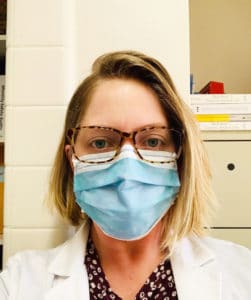COVID-19 Modeling & Projections

One of the only constants of the COVID-19 pandemic is how often data and projections are changing. This is frustrating for our society, as there is a collective overwhelming desire to know when the US will hit its peak of cases, and when life can resume normalcy, and those timelines seem to be constant flux. It is therefore important to understand how projections are made and why they seem to change so frequently. Projections and public health guidance are derived from data-based models, including key numbers like the rate of infections in hot spots, the progression of recoveries, CFR (case fatality ratio), etc. The models then map out what the near future could look like – including when we could expect to see the disease die out. That said, with such a novel virus, those numbers are only as reliable as the data coming in, and researchers are advocating for improved systems of shared data to make better projections.
As we participate in protective measures like social distancing for longer, the rate of infections should slow down, changing the data that feeds the models once again. As updated modeling projections influence governments’ public health decisions for COVID-19 containment on a fairly regular basis, experts argue that long-standing guidance from health organizations should also be reconsidered in light of the changing data and current circumstances.
The United States is now the epicenter of the COVID-19 pandemic surpassing China and Italy last week, and the swift uptick in cases has experts urging the use of face masks for the general public- especially for those with essential jobs and those that rely on public transportation. Wearing a mask does not equate to total prevention by any means, and should not replace hand washing and physical distancing measures, but it could help mitigate the overall risk of transmission.
Making the Case for Face Masks
When COVID-19 infections arrived in Europe and in the US in February, public health authorities immediately and loudly cautioned the use of surgical masks for the general public. The insistence was based on several long-standing factors including masks should be worn only by those who are already sick and their caregivers to prevent the spread of their germs, and to prevent people from stockpiling N95 masks which could lead to a depletion of the critical PPE supply for healthcare workers and could put hospital systems at risk.
As we are currently witnessing throughout the US, and especially in major outbreak hot spots like New York City, Detroit, San Francisco, and Chicago, hospital systems are very much at risk. Medical supplies are dwindling and in some cases, healthcare workers have been mandated to reuse their N95 face masks.
The dire situation of those systems makes reversing the statement on face masks for the general public a difficult one, and not one that the CDC or WHO is willing to make at this time. In a tweet last week, the CDC stood firm that masks should be reserved for those that are sick and for healthcare workers. However, as the pandemic thunders on in the US, healthcare experts are increasingly advocating for the use of face masks in communities as an additional protective measure to fight the spread of disease.
Telling symptoms of COVID-19 include fever, cough, shortness of breath, but there are many cases of patients who were asymptomatic. The biggest argument for wearing face masks is to prevent those that are sick with no symptoms from unknowingly spreading infection to others. The main route of COVID-19 transmission is from large respiratory droplets via sneezing and coughing – and wearing a mask, combined with good hygienic practices and staying home, could have an impact on reducing community spread. In a study published from a variety of researchers that have recently received large circulation in medical circles, data evaluated from the 2003 SARS outbreak indicate that washing hands 10x a day was 55% more effective in reducing disease transmission – but wearing a face mask was 68% more effective.
VIGILINT advises the routine use of respiratory masks, coupled with good hand washing for ALL essential employees who work in close quarters where physical distancing is difficult, and in asymptomatic patients who must leave home quarantine.
